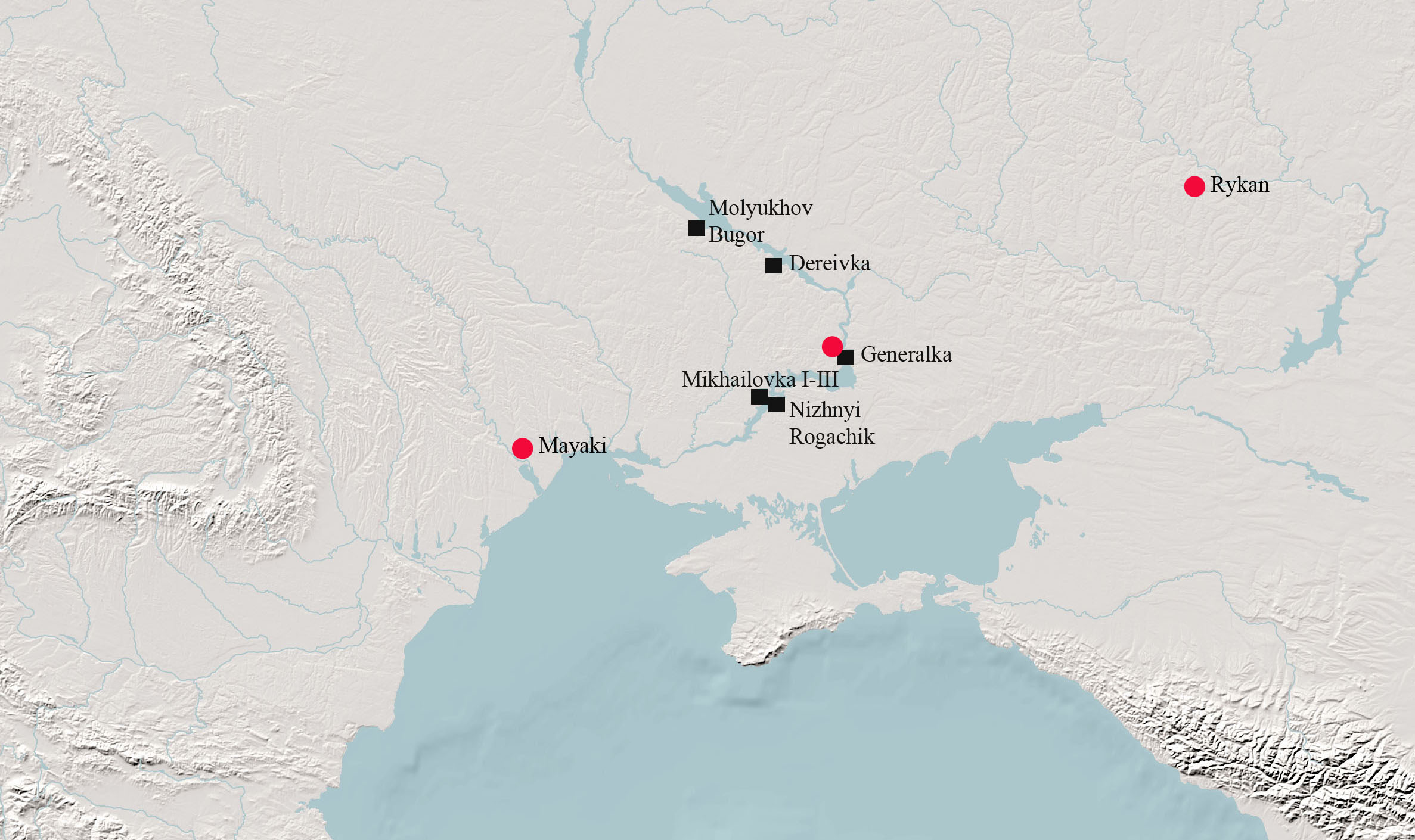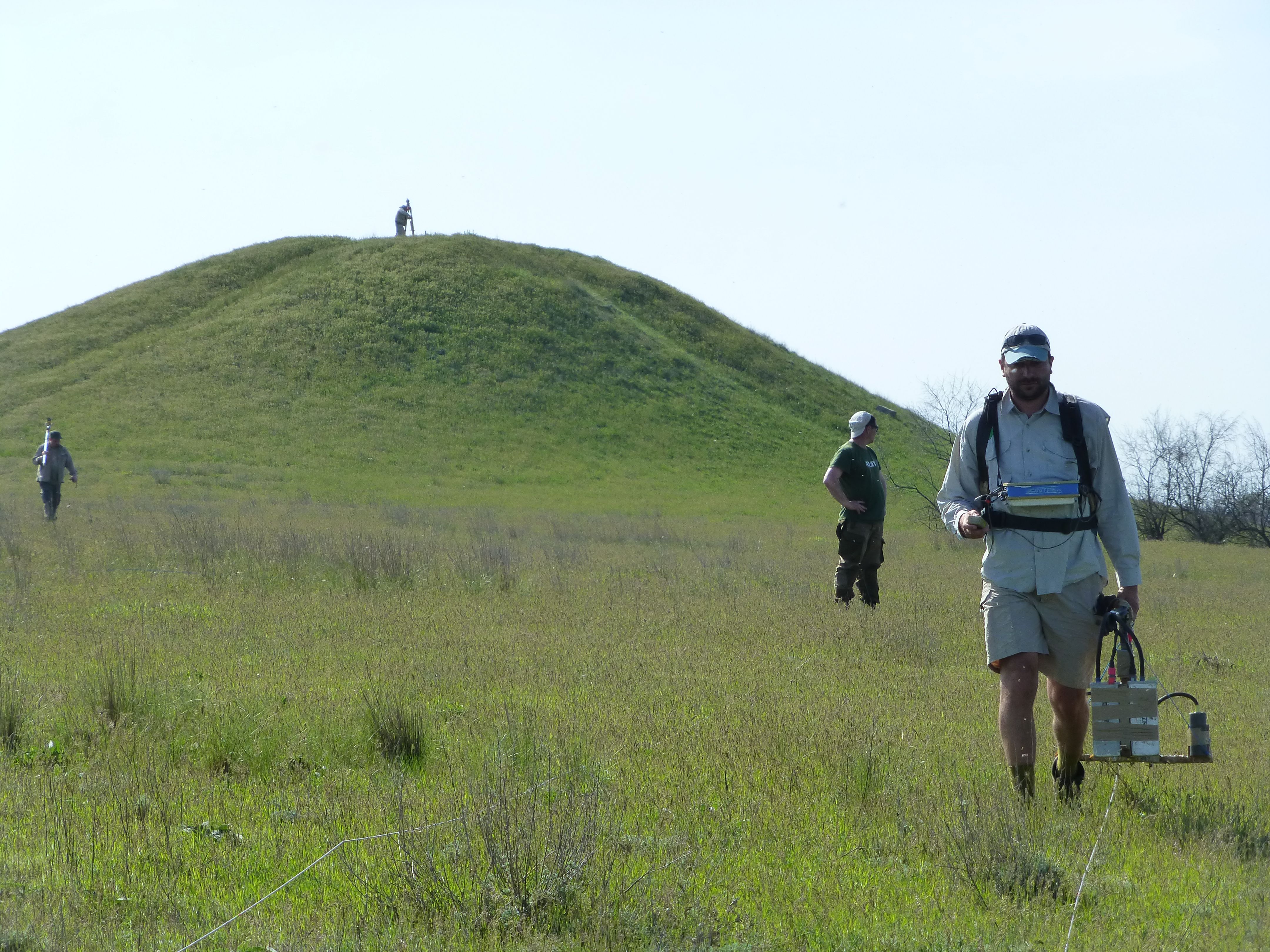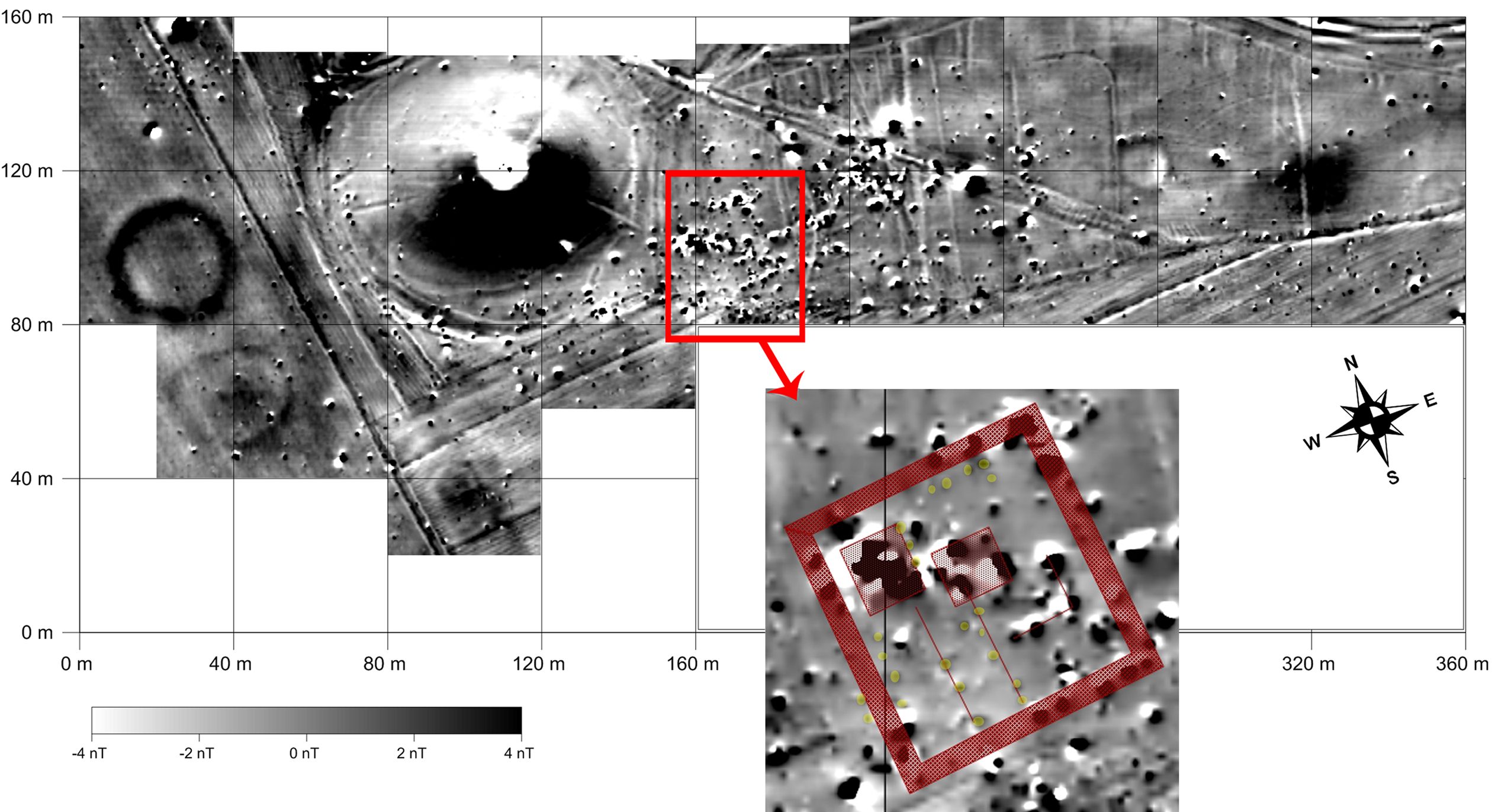Forms of pastoralism are at the heart of one project researching the Eurasian steppe and forest-steppe zone. Two projects investigated the remains of pastoralists in the 4th/3rd millennium BCE north of the Black Sea and of the 1st millennium BCE in the steppe north of the Caucasus.
Research
A /
Pastoralists in the 4th/3rd millennium BCE north of the Black Sea
Analyses of animal bones from settlements in the steppe to the north of the Black Sea suggest that a marked change occurred there in the form of subsistence agriculture practised at the end of the 4th millennium BCE. At around 3100 BCE, the residents of these settlements changed their form of animal husbandry to focus predominantly on cattle. Sheep and goats were kept as complementary livestock as well; however the proportions of wild game bones became quite small. These archaeozoological findings stand out in contrast to those from settlements dating to before 3100 BCE. Animal bone material has been recovered from settlements in the forest steppe and in the steppe for the period before 3100 BCE. The evaluation of this material indicates the existence of quite a variety of subsistence strategies in the 4th millennium BCE. A great deal of hunting continued to be done in order to fill the need for meat at some settlements; in others, more intensive sheep/goats husbandry was practised, or a variety of domesticated animals were kept. Archaeologists frequently see the introduction, at around 3100 BCE, of animal husbandry specializing in cattle as a fundamental innovation specific to the arid steppe zone. The inadequacies of the archaeobotanical data notwithstanding, it is safe to assume that animal products played a prominent role in the human diet in the 4th and 3rd millennium BCE.
A previous study conducted within the research group in the first phase of the Excellence Cluster Topoi (Mobility and palaeodiet in prehistoric Western Eurasia) attempted us to use organic residue analysis to obtain more proxy data for investigating diet and subsistence strategies for the human groups living in the North-Pontic region during the transitional periods of the Eneolithic and the Early Bronze Age (3800 BCE to the 2500 BCE) [→ related PhD-project (A-2-1-1) Diet and subsistence practices in the Dnieper area of the North-Pontic region, Simona Mileto ]. In this interdisciplinary study in cooperation with Richard P. Evershed (OGU, School of Chemistry at the University of Bristol), more than 200 sherds from four Eneolithic sites (Dereivka, Molyukhov Bugor, Mikhailovka layers I- II and Nizhniy Rogachik) and two Early Bronze Age settlements (Mikhailovka layer III and Generalka) were sampled (Fig. 1).

Fig. 1: Settlements north of the Black Sea from which samples for organic residue analyses (black squares) and isotope analyses (red circles) were taken | Map © Doris Bordon
Results
The molecular and stable isotope analysis showed a various economy especially in relation to regional needs. Indeed, the results revealed that the diets of the Eneolithic and Early Bronze Age communities lived in the steppe, were mainly based on the exploitation of ruminant products, while the subsistence economy of the northern forest-steppe communities was based on horses, fish and wild animals exploitation. Specifically, the great majority of the pottery vessels recovered from the steppe were used for the processing of ruminant adipose and dairy products, which reflects the faunal records. Significantly, the data for the multilayer site of Mikhailovka revealed that the economic strategies of the communities living in the steppe were based on extensive pastoralism of ruminants and exploitation of secondary products, confirming that in the steppe people already possessed a sophisticated knowledge of animal domestication in the Middle Eneolithic (Mikhailovka I; 1st half of 4th millennium BCE). Carbon isotope analyses suggest that the dietary habits did not change with respect to the type of animal products exploited. The main transformation detected relates to the faunal records, which revealed an increasing percentage of cattle bones in the two younger layers of Mikhailovka (layer II: end of 4th millennium BCE; layer III: 1st half of 3rd millennium BCE). In contrast, molecular and stable isotope analyses of pots recovered from the two settlements in the forest-steppe (Dereivka, Molyukhov Bugor) showed that the diet of these Eneolithic communities was dominated by equine products with some fresh water fish products and ruminant products. Therefore, the integration of the faunal record analysis to the isotopic data, allowed suggesting an economy of the forest-steppe communities mainly based on hunting, fishing and cattle breeding. Significantly, the dates of Dereivka settlement (3800-3500 BCE) are of particular interest. Indeed, over the course of many years and citing different grounds, researchers have frequently argued that this settlement was an early center for the domestication of horses. Therefore, a great attention has been directed to this matter. However, the carbon isotope data did not allow any conclusions to be drawn about whether the horses at Dereivka were wild or domesticated and the additional deuterium isotope analysis performed did not yield statistically significant results. Nevertheless, the data obtained do provide new and exciting insights into the dietary habits of the residents of these settlements, particularly as they can be juxtaposed directly with the archaeozoological data.
In the past, archaeologists have equated the introduction of specialized animal husbandry with a mobile form of pastoralism, believing that only a combination of the two strategies would have been efficient for the arid steppe zone. The methodological challenge posed by the search for indications of mobile pastoralism was the subject of a PhD project [→ (A-2-1-2) On the informational value of isotope analyses using the example of Eneolithic–Early Bronze Age faunal remains from the west Eurasian steppe, Martin Riesenberg ]. In an attempt to identify patterns indicating seasonal changes of location, strontium and oxygen isotope analyses will be performed on sequential samples from the teeth of domesticated ruminants from three settlements, one of which is Generalka (Fig. 1), which was also investigated through organic residue analysis.
B/
Pastoralists of the 1st millennium BCE in the steppe north of the Caucasus
The second project within (A-2-1) dealed primarily with spatial usage models of the Early Iron Age mounted nomads in the first millennium BCE in western steppe regions of Eurasia, taking inner usage patterns of sacred areas around a kurgan as examples. Since burial areas with large kurgans (tumuli) serve as one of the most important information sources for reconstructing social stratification of ancient mounted nomads and since they can offer a representative overview of the usage of sacred ritual practices area (i.e. necropolis usage), burial mounds of the Scythians from the Early Iron Age have been tackled.
Due to a lack of information on burial areas with large kurgans and their surroundings that served as ritual space (so called periphery) in the steppes of northern Pre-Caucasus (Russia), the research group has focused on this particular area. In order to get a clear idea about ritual spaces in the kurgan surroundings and to broaden the existing knowledge in the Eurasian steppes, necropolises in the North Caucasus of the Scythian period have been explored using the archeological-geophysical method (Fig.2).

Fig. 2: Kurgan 1 of Bi-Tjube necropolis. North Caucasus. Field research.
Foto by Jörg Fassbinder | © Stiftung Preußischer Kulturbesitz / Prussian Cultural Heritage Foundation/ Jörg Fassbinder
Results
The investigation took place in the central North Caucasus (Stavropol hills in Stavropol area), north-western Caucasus (Kuban, Krasnodar area), and in north-eastern Caucasus (the Nogai Steppe, Stavropol area) in close cooperation with project (B-2-4) Scythian tombs – between monumentality and gigantomania.
43 necropolises from the Scythian period have been examined in the steppes of the North Caucasus since 2012, whereas 13 among them have been measured geophysically (Fig.3). Two different space usage models of sacred areas around the kurgans were identified during the burial mounds analysis. The periphery of some of the large kurgans has been heavily built-up with findings like up to three ring ditches, circular walls, rectangular ritual sites, ritual ring ditches, or hoof-shaped findings. Some of these findings have not been discovered in the North Caucasus until now. All such constructions indicate complex ritual acts of horse nomads before, during, and after constructing a large tomb during a burial ritual. In contrast to such necropolises, a whole range of kurgan groups with a periphery showing hardly similar traces has been found as well. In this case, either none rituals accompanying a burial took place there, or, they occurred in another area. Further west in Kuban (Krasnodar region), no findings in large kurgans periphery have been discovered. Apparently, the Kuban River marks a “religious border” and separates the two regions in the North Caucasus as far as ritual practices of the Early Iron Age mounted nomads is concerned.
In comparison, some findings in the periphery of large kurgans in the north-eastern Caucasus show many parallels with ritual constructions of the sacred spaces around kurgans in Kazakhstan (Central Asia) and Siberia.

Fig. 3: Magnetogram of the Early Iron Age necropolis and the adjacent Bi-Tjube periphery. Enlargement of architectonic findings. Magnetometer survey using Smartmag SM4G-Special cesium-magnetometer, sensitivity ±10 pT, variometer (duo-sensor) configuration, 40 x 40 m grid, spatial resolution 12.5 x 50 cm, interpolated to 25 x 25 cm, total intensity of the earth magnetic field: ca. 50.270 +/- 30 nT (April 2015), dynamics ± 4 nT, grey shade plot in 256 greyscales (red – stone foundations; yellow – postholes). Magnetogram: Jörg Fassbinder, Andrei Asăndulesei | © Jörg Fassbinder, Stiftung Preußischer Kulturbesitz /Prussian Cultural Heritage Foundation
The results of the research and cooperation with project (B-2-4) Scythian tombs – between monumentality and gigantomania have been presented not only at numerous conferences and individual lectures in Germany, Russia, Turkey, Poland, Greece, USA, and Great Britain, but also published for a broader audience as several essays in German, Russian, and English [→ (B-2-4) Scythian tombs – between monumentality and gigantomania]
Selected Papers
- “Early Iron Age kurgans and their periphery: latest findings and interpretations from the Northern Caucasus“. Paper given on “The Second International Conference on Virtual Archaeology“ at Sankt-Petersburg (June 2015) http://www.virtualarchaeology.ru/pdf/281_va_book2015.pdf
- Hermann Parzinger, “Scythian Elite Burial Mounds in the Eurasian Steppes“ Presentation given at the Ninth Annual Leon Levy Lecture of the ISAW, New York University: (November 2015)
- Anton Gass, “Die Skythen im Nordkaukasus – Aktuelle Forschungsergebnisse“. Presentation given on the lecture series of the Berliner Gesellschaft für Anthropologie, Ethnologie und Urgeschichte (Oktober 2016)
- Hermann Parzinger, “Scythian elite burial mounds in the Eurasian steppe new discoveries for a deeper understanding“, Albert Reckitt Archaeological Lecture at the British Academy
